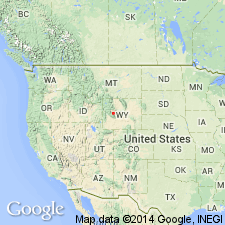
- Usage in publication:
-
- Spring Draw soils*
- Modifications:
-
- Named
- Dominant lithology:
-
- Soil
- AAPG geologic province:
-
- Paradox basin
Summary:
Name applied to soil developed on the Harpole Mesa formation (new) and on older formations. Type locality is the same as the one designated for the Harpole Mesa--on south side of Spring Draw, SW1/4 SW1/4 sec 32, T25S, R24E, Grand Co, UT, Paradox basin. Divisible into lower (Aftonian?), middle (Yarmouth?), and upper (Sangamon?) soils which are only locally superposed. Occurs in four facies: 1) Brown Podzolic facies at 8,600-9,200 and upwards to 10,500 ft elev. with A horizon superposed on truncated B horizon of red-brown, moderate to strong, coarse to medium, angular block 4.5 ft thick; 2) Brown Forest facies between 8,200 and 9,200 ft elev. with A horizon in relict profiles, a 4-5 ft thick B horizon red-brown, moderate, medium to coarse, angular to subangular, blocky, and Cca horizon 3-4 ft thick red-brown, locally mottled, usually structureless; 3) Brown soil facies at 6,200-8,500 ft elev., the most extensive facies has its A horizon on truncated B horizon 40 to 50 in thick that is red-brown, strong to moderate, medium to coarse, columnar-angular-blocky, and a 4-6 ft thick Cca horizon; 4) Sierozem facies at 5,800-6,200 ft elev., confined to Colorado River and plateau east of Spanish Valley with a thin, friable A horizon, 4 inch Bca horizon, and a 10 ft thick Cca. Facies map, analyses of facies, correlation charts. Is older than lower member of Placer Creek formation (new). Pleistocene age.
Source: GNU records (USGS DDS-6; Denver GNULEX).
For more information, please contact Nancy Stamm, Geologic Names Committee Secretary.
Asterisk (*) indicates published by U.S. Geological Survey authors.
"No current usage" (†) implies that a name has been abandoned or has fallen into disuse. Former usage and, if known, replacement name given in parentheses ( ).
Slash (/) indicates name conflicts with nomenclatural guidelines (CSN, 1933; ACSN, 1961, 1970; NACSN, 1983, 2005, 2021). May be explained within brackets ([ ]).

